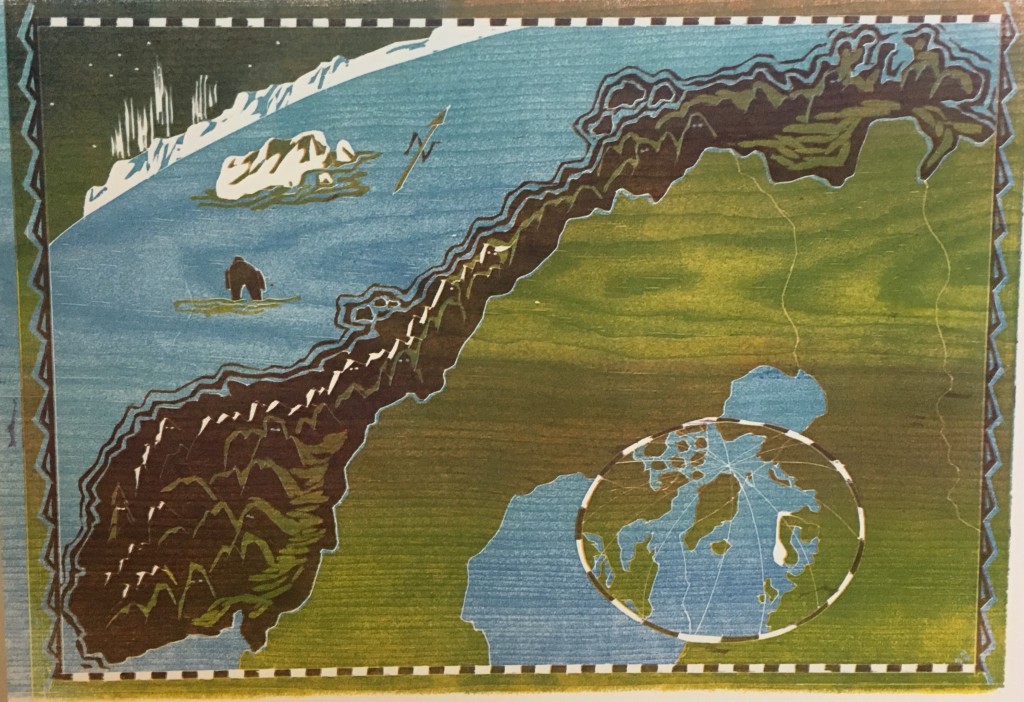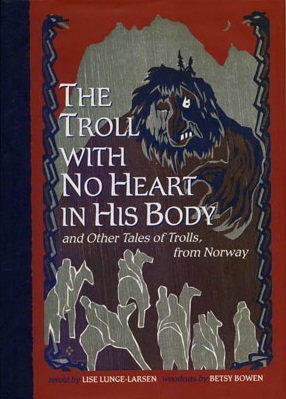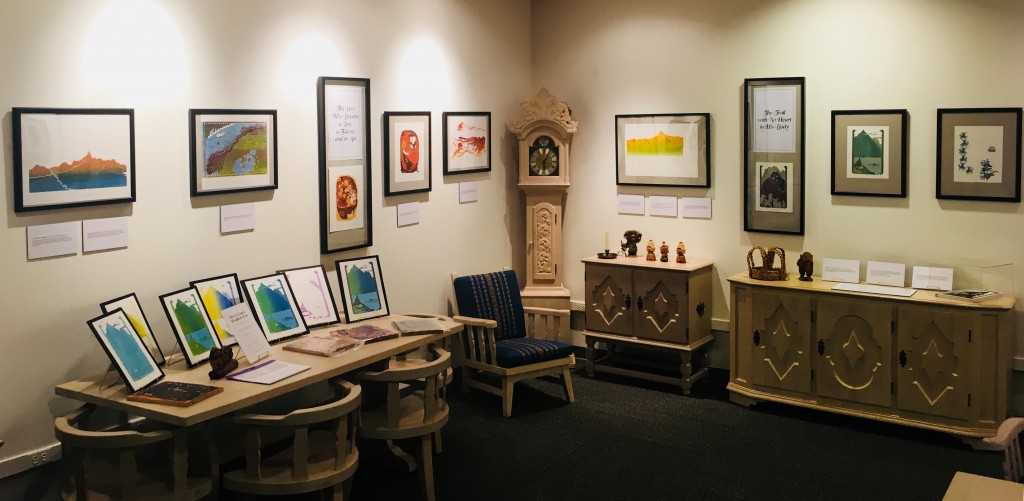Exhibit opens Fri. 10 Nov. 2017; Exhibit closes Wed. 7 Feb. 2018.
Trolls are associated with trouble and magic, with those parts of the world we cannot explain. What does the word “troll” mean? Scholars have many guesses as about the origin of the word but nothing definite. The word appears in Old Norse and suggested many things – giants as well troublesome people and animals. Additionally, Old Norse also had the verb form trylla which John Lindow translates variously as “turn (someone or something) into a troll,” “enchant,” and “entroll.” Trolls appear first in Snorri’s Edda. Today, some people still see or hear from trolls: Lindow begins his book Trolls: An Unnatural History (2014) with the story of a young exchange student in Oslo seeing a troll on a dark, rainy night in the 1970s. Lindow writes: “Trolls have been around for 1,000 years, and they are not going away.”


Trolls vary in their forms and size: tall as trees, ancient and rugged as the Nordic landscapes they inhabit. They live in the mountains, in caves, under bridges. They carry their head under their arms or hide their hearts in wells. They walk across oceans. They fly over mountains. Trees and shrubs may grow from their heads, and they may have noses long enough to stir soup. They may have children; some are old and some are young. Tales tell us that humans best avoid them, but if one must confront them, be persistent, kind, plucky, and willing to heed good advice.
This exhibit features Minnesota’s Betsy Bowen’s original woodblock prints on loan from the University of Minnesota’s Kerlan Collection, complemented by the stories told by the folklorist and author, Lise Lunge-Larsen and featured in the University of Minnesota Press’ reprint, The Troll with No Heart in His Body (2013).



